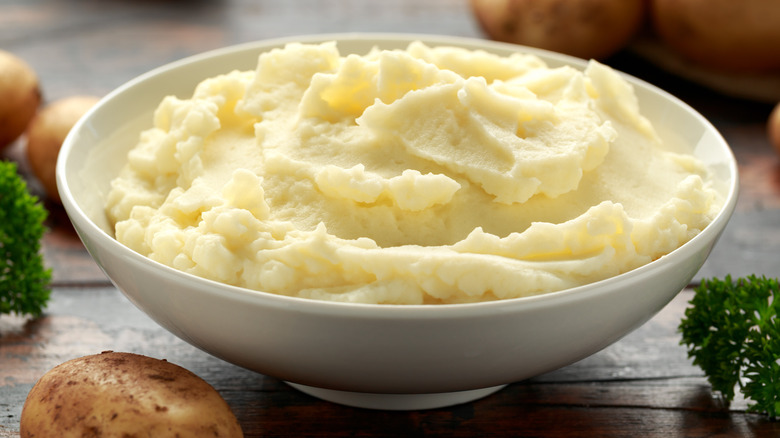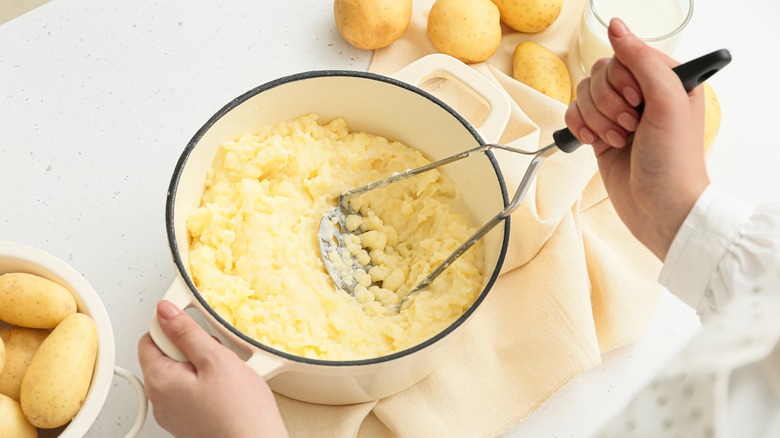Why You Should Never Use A Blender For Mashed Potatoes
Mashed potatoes are the perfectly puffy white clouds that frame a picturesque plate heaped with food. Beyond looks, they are all about texture — but mouthfeel is a tricky arena to fight in. A darling dollop of mashed potatoes done just right can produce the most wonderful fluffy effect, while a drab gob of messed-up mash can leave a strange feeling in the mouth and a disastrous dinner experience.
Of the many preparation methods you will find on YouTube, in countless blogs online, and in your grandmother's old recipes, using a food processor or blender is a relatively new one. On the surface, it sounds wonderfully quick and easy; surely, it's the perfect way to prepare mashed potatoes. Unfortunately, this is not at all the case.
According to Kitchn, using a blender or food processor to make mashed potatoes results in a sticky, glued-up, incredibly viscous mess that is not at all like the fluffy mashed potatoes you would want. Because food processors break down the potatoes so quickly, the starch from the potatoes breaks down as well — and binds the mash together into something more reminiscent of cement than a cloud.
What to do instead of blending
There are other, better ways of preparing mashed potatoes that will avoid gluey textures and ensure maximum fluff. Of course, using a hand masher is a tried-and-true classic, although it may be a bit harder on the arms and shoulders. Epicurious recommends a potato ricer for maximum fluff and some elite mashed potato texture.
If you really want to look cool making mashed potatoes, and maybe you want a new kitchen gadget to try out, Better Homes & Gardens suggests using a food mill. Basically a sieve attached to a hand crank, it's a wonderful way of ensuring that there are no clumps in your mash.
An immersion blender is another option, and while, as Epicurious notes, there is a risk of breaking down too much starch, there are ways around it. Only partially mashing with the immersion blender will allow you to keep the starch intact and still get a consistent texture, although this will require use of at least one other mashing method. Also, adding other, less starchy ingredients — like turnips and parsnips — is another way to get around a gluey disaster.

